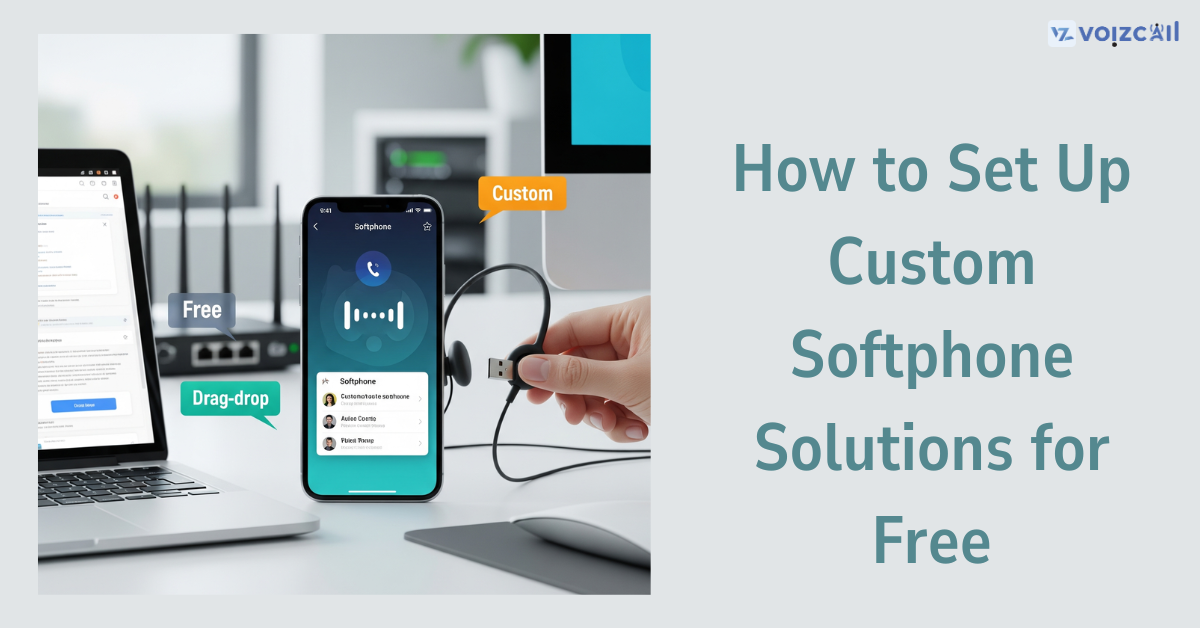


04/Aug/2025
Telephones are not simply hardware anymore, but they have become smart, flexible and solely software-based. Hello softphone-world, digital phones that operate through your laptop, mobile unit, or web browser. However, the good news is that you can create your own proprietary soft phone in a cost-free manner-that is you do not have to load up your wallet or go head first into telecommunications arcane.
This is going to explain to the startup, remote team, and VoIP enthusiast how to set up a completely free custom softphone that fits your needs.
Softphone is a program that enables its user to make and receive voice phone calls through the use of computer/internet via the VoIP (Voice over IP) protocol. It duplicates the functionality of a common phone; however, it runs on such devices as a desktop, a smartphone, or even a browser.
A personal softphone goes to the next extent, as you can launch it and alter the interface, add features, and combine it with your business procedure. The best part? You don’t always need to spend a dime to get started.
First, here is a list of the requirements you are going to need before you get into the setup:
Essentials:
Call / Email for Sales Inquiry Today
A stable internet connection
The SIP (Session Initiation Protocol) account or SIP server
A softphone platform or open-source client
A microphone and speakers (or a headset) device
How to organize your own softphone system step by step
Here’s how to set up your custom softphone for free using open-source tools:
1. Choose an Open-Source Softphone App
Some popular free options include:
Linphone (cross-platform, customizable)
Jitsi (great for calling + video)
MicroSIP (lightweight Windows softphone)
Zoiper Free (offers branding options with paid upgrade)
These allow you to build from source or customize UI/UX elements using documentation.
2. Get a Free SIP Account
To make calls, you’ll need a SIP provider. Some offer free plans for testing:
CallCentric
OnSIP
Linphone SIP service
Asterisk or FreePBX for self-hosted SIP servers
3. Configure SIP Credentials
The SIP account information (SIP server, username, password) can be entered in the softphone settings.
4. Customize Your UI and Features
Using open-source repositories (GitHub, for instance), you can:
Modify the interface to match your brand
Add or remove features (call logs, SMS, video, etc.)
Integrate CRM or help desk tools using APIs
5. Test and Deploy
Run test calls, check audio quality, and fine-tune codec settings. Once it works perfectly, roll it out to your team.
Why Go Custom?
Thinking it is not worth the trouble still? These are some of the good reasons:
Key Benefits:
Zero licensing cost
Tailored features for your business needs
Brand consistency with custom UI
Connect to your CRM or help desk
When you use self-hosted systems, with self-hosted systems you should own your data
Scalable and flexible for startups or enterprises
Final Thoughts: Take Control of Your Calls
You don’t need a massive IT budget to build a professional phone system. Although creating a bespoke, powerful, and cost-effective softphone solution sounds challenging, it can be easily achieved with a couple of free apps and a little direction.
Then, whenever you feel like dropping useless, generic applications and having something that actually suits your flow, then it is the time to consider free softphone development.
Send us an inquiry or check out available open-source projects, and the personalized VoIP environment will be in your hands in a few clicks.